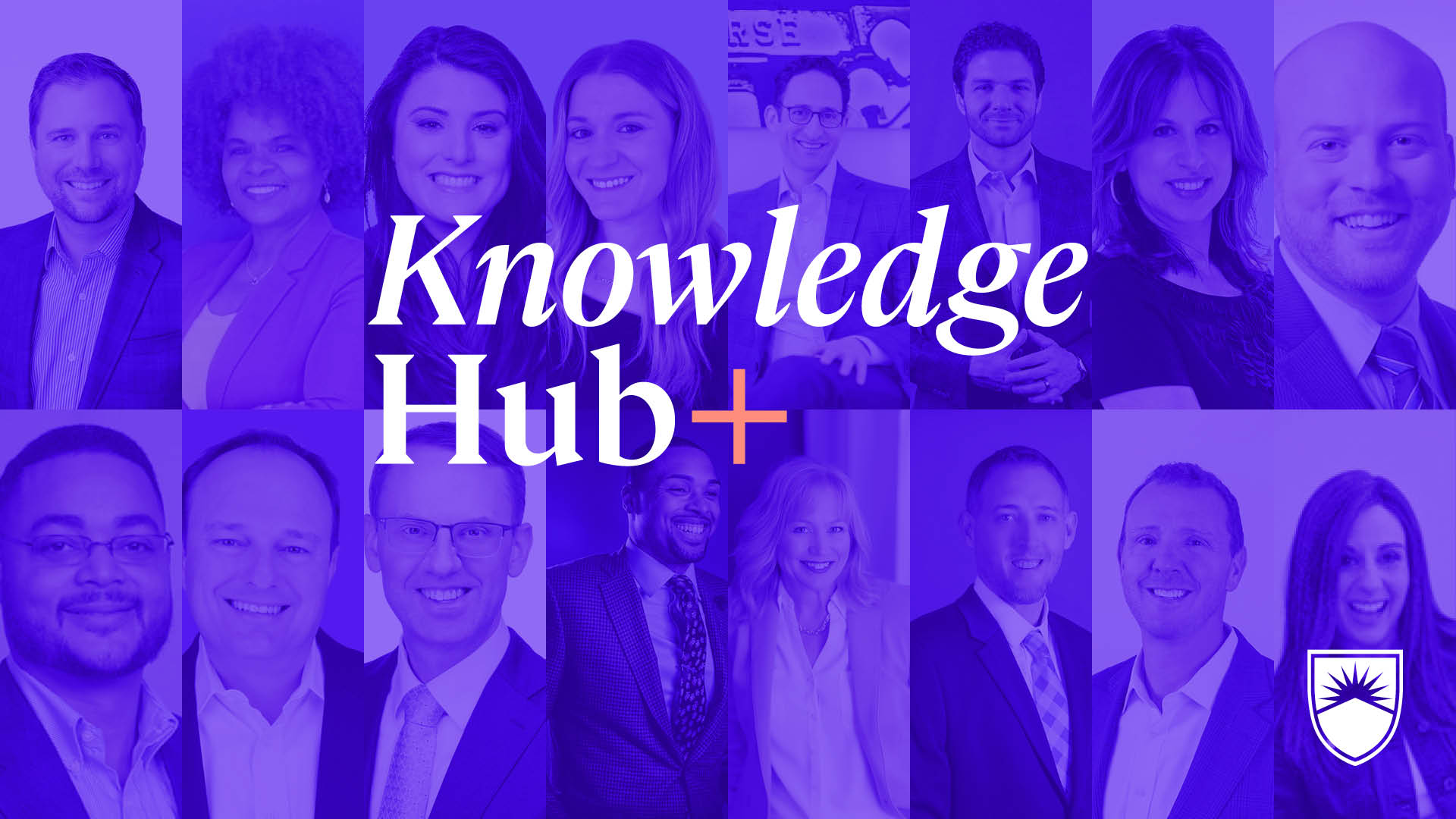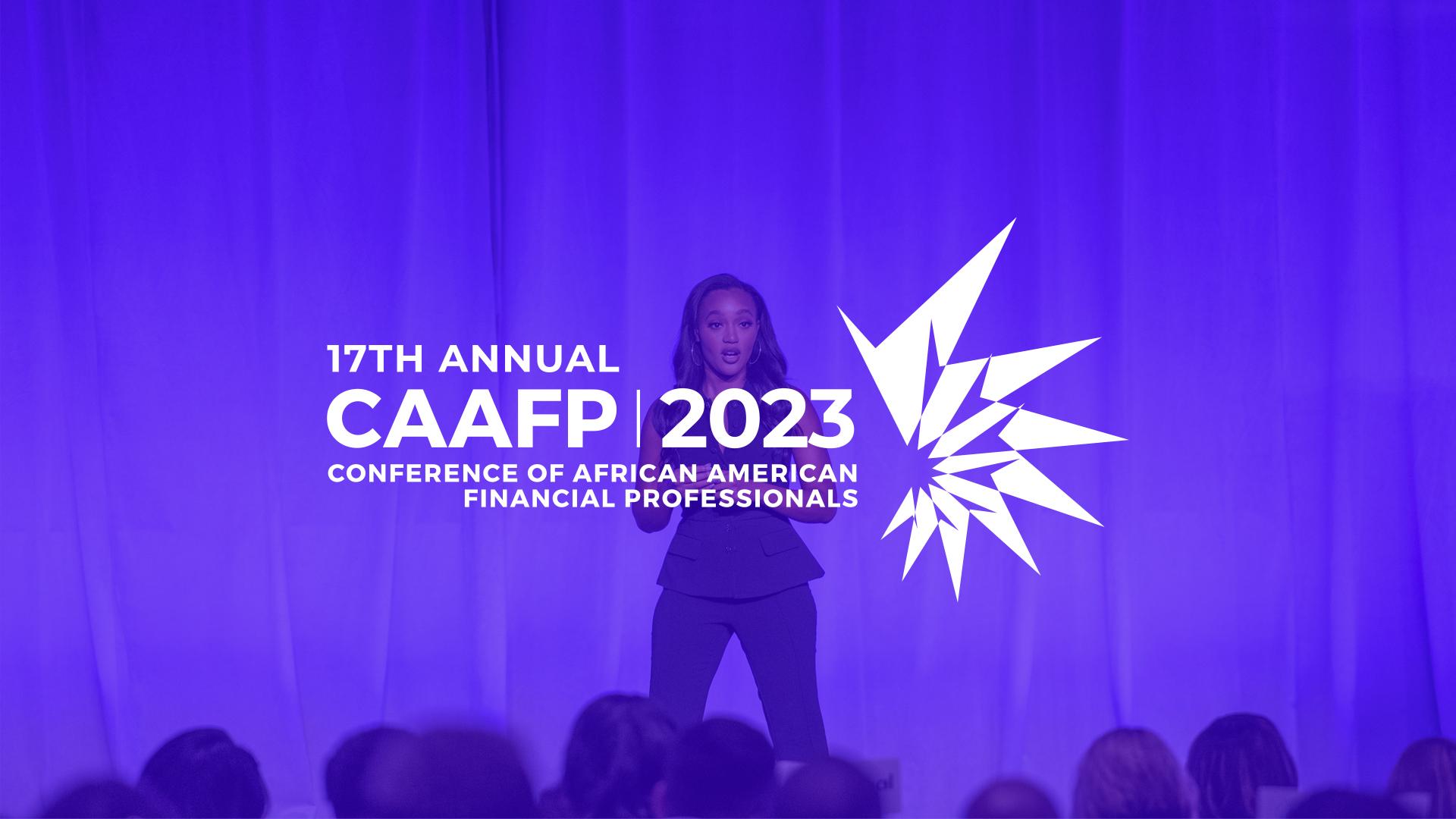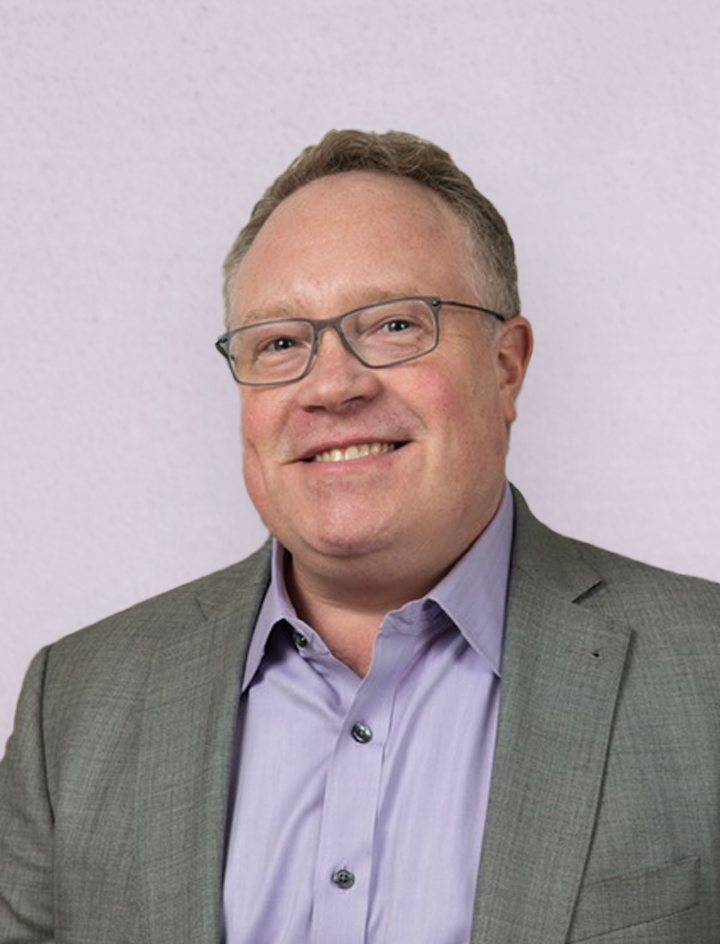Retirement Planning News
Want A Second Home? Better Be Careful, Advisors Say
Retirement Planning On-Demand Webcasts
Unveiling Retirement Income Insights: A Gender Perspective
About The College Press
The American College of Financial Services Announces Knowledge Hub+, a Just-in-Time Learning and CE Platform

KING OF PRUSSIA, PA – October 31, 2023 – The American College of Financial Services announces Knowledge Hub+, a new learning platform that curates insights from sought-after academics, industry innovators, financial planning experts, and practice management leaders into one dynamic experience. Knowledge Hub+ will launch with over 50 hours of combined CFP® and College continuing education (CE), with 10 hours of new growth-focused content planned quarterly.
Launching in January, The College will first exclusively introduce Knowledge Hub+ to over 27,000 designees participating in The College’s Professional Recertification Program (PRP), followed by a public launch of the new learning platform later in 2024. The College’s vast community will benefit from a robust library of CFP Board and College approved CE provided by in-demand subject matter experts, including Michael Finke, PhD, CFP®, Wade Pfau, PhD, CFA, RICP®, Ed Slott, CPA, Steve Parrish, JD, RICP®, CLU®, ChFC®, AEP®, Jamie Hopkins, Esq., LLM, CFP®, ChFC®, CLU®, RICP®, Kelly Waltrich, Tyrone V. Ross, Jr., and more.
“The College has conducted several studies to determine the knowledge formats financial advisors and agents prefer most. In a fast-paced marketplace, where expertise is the unique value that professionals bring to client conversations, they often need to know … now,” said Jared Trexler, Senior Vice President, Chief Marketing and Strategy Officer of The American College of Financial Services. “We are excited to deliver another avenue for lifelong learning.”
“Having the ability to immediately provide education that is critical to professionals is a game changer,” said Chet Bennetts, CFP®, CHFC®, CLU®, RICP®, CLF®, Assistant Professor, Financial Planning and ChFC® and CFP® Certification Education Program Director at The American College of Financial Services. “We are able to bring cutting-edge knowledge around topics like AI to professionals in real-time, as they most need it.”
Knowledge Hub+ provides learning to accelerate practice advancements in nine areas, including:
- Financial Planning
- Retirement Planning
- Wealth Management
- Insurance and Risk Management
- Advanced Planning
- Philanthropic Planning
- Practice Management
- Diversity, Equity, and Inclusion
- Ethics in Financial Services
"The ability to partner with The American College of Financial Services and provide actionable and timely insights is an exciting journey," said Jeff Levine, CPA, PFS, CFP®, RICP®, ChFC®, CWS, AIF, BFA™, Chief Planning Officer of Buckingham Strategic Wealth. “Knowledge Hub+ will allow me to bring critical tax-related learning to professionals, aiding them and thus impacting their clients.”
The platform for applied knowledge will launch with the following industry experts.
The American College of Financial Services Academics:
- Chet R. Bennetts, CFP®, ChFC®, CLU®, RICP®, CLF®
- David Blanchett, PhD, MSFS, CFA, CLU®, ChFC®, CFP®
- Chia-Li Chien, PhD, CFP®, PMP®, CPBC
- Sophia Duffy, JD, CPA, AEP®
- Azish Filabi, JD, MA
- Michael Finke, PhD, CFP®
- Timi Joy Jorgensen, PhD
- Jennifer Lehman, PhD, JD, CFP®, CAP®
- Eric Ludwig, PhD, CFP®
- Joellen Meckley, JD, MHS, ChSNC®
- Steve Parrish, JD, RICP®, CLU®, ChFC®, AEP®
- Ed Slott, CPA
Industry Innovators, Experts, and Practice Management Leaders:
- Dave Alison, CFP®, EA, BPC – C2P Enterprises
- Denise Appleby – Appleby Retirement Consulting
- Ian Berger, JD – Ed Slott and Company, LLC
- Sarah Brenner, JD – Ed Slott and Company, LLC
- Adam Holt, CFP®, ChFC® - Asset-Map
- Jamie Hopkins, Esq., LLM, CFP®, ChFC®, CLU®, RICP® - Bryn Mawr Trust, Income Lab, and FinServ Foundation
- Andy Ives, CFP®, AIF® - Ed Slott and Company, LLC
- Jeff Levine, CPA, PFS, CFP®, RICP®, ChFC®, CWS, AIF, BFA™ - Buckingham Strategic Wealth
- Rick McClanahan - National Association of Certified Financial Fiduciaries, LLC
- Alex Murguia, PhD – RISA
- Wade Pfau, PhD, CFA, RICP® - RISA
- Tina Powell - Intention.ly
- Meghan Richter - Intention.ly
- Tyrone V. Ross, Jr. - 401 Financial
- Heather Schreiber, RICP®, NSSA® - HLS Retirement Consulting
- Matt Seitz – C2P Enterprises
- Jason L. Smith, CEP®, BPC – C2P Enterprises
- Deirdre Van Nest - Crazy Good Talks
- Kelly Waltrich - Intention.ly
Additionally, Knowledge Hub+ will provide automated reporting to the CFP Board and The College’s records, making it easier for alums and CFP® certificants to fulfill the thirty-hour continuing education requirement every two years without administrative headaches.
###
ABOUT THE AMERICAN COLLEGE OF FINANCIAL SERVICES
Founded in 1927, The American College of Financial Services is the nation’s largest nonprofit educational institution devoted to financial services professionals. Holding the highest level of academic accreditation, The College has educated over 200,000 professionals across the United States through certificate, designation, and graduate degree programs. Its portfolio of applied knowledge also includes just-in-time learning and consumer financial education programs. The College’s faculty represents some of the foremost thought leaders in the financial services industry. Visit TheAmericanCollege.edu and connect with us on LinkedIn, Twitter, Instagram, Facebook, and YouTube. Discover all the ways you can expand your opportunities with us.
Contact:
Sarah Tremallo
908-967-0381 / stremallo@jconnelly.com
Lindsey Allumbaugh
678-643-1310 / lindsey.allumbaugh@theamericancollege.edu
Representation Insights
CAAFP 2023 Focuses on Reclaiming Black Wealth

The three-day event entered its 17th year during a time of great changes. Since the nation’s renewed racial awakening in 2020, progress has been made on many fronts in the mission to bring greater equality and opportunity for African Americans to public and business spheres. However, the recent Supreme Court decision regarding affirmative action has sparked new conversations about the future of diversity, equity, and inclusion.
Given this state of affairs, speakers at CAAFP 2023 focused on renewing attendees’ passion for pursuing change in their organizations and other environments and increasing the power of Black communities through cooperation and commitment. Through inspiring workshops, coaching sessions, networking opportunities, keynote addresses, and more, the conference once again served as a vehicle to bring people of all personal and professional backgrounds together for an exciting and empowering experience.
Finding Balance in Trying Times
The CAAFP’s general session opened with words of welcome from College figures including Dr. Pamela Jolly and President and CEO George Nichols III, CAP®. Dr. Jolly, a leader affiliated with the American College Center for Economic Empowerment and Equality, told attendees that while protests and demonstrations can raise awareness about issues of diversity and inclusion, what’s really needed is actionable plans to back up the desire for change.
“There was a moment. Now, what we need is a movement,”
Dr. Pamela Jolly
“I want us to be bold, but I don’t want us to be spontaneous. I want us to be strategic. Reclaiming Black wealth involves reclaiming our memories, our history, our sweat equity, our communities, and our models of wealth.”
Dr. Jolly was followed by Eszylfie Taylor, President of Taylor Insurance and Financial Services, who discussed the interconnectedness of mind, body, and money. A financial and personal wellness guru, Taylor emphasized the need for balance in all elements of life, as well as for ongoing transformative action.
“Your diet isn’t only what you eat; it’s what you watch, what you listen to, and who you surround yourself with,” he said. “I don’t believe in winning and losing: I believe in winning and learning. And you can’t get upset about results from work you didn’t do.”
Planning for Success
Day 2 of the conference opened with an address from Lauren Simmons, who at 23 years old became the youngest woman to be a full-time trader in the New York Stock Exchange. Simmons is now a personal finance expert for women and youth, and she detailed how her own relationship with money influenced her career journey.
“Black wealth is a power beyond imagination, but we’re running a marathon, not a sprint,” she said. “Being wealthy is about having a long-term plan. If we continue to think in a short-term mentality, we will continue to repeat history over and over again.”
Simmons also spoke about many pioneers of Black wealth, including Jeremiah Hamilton, who was the first Black man on Wall Street. Having invested in the construction of the country’s modern railroad system, Hamilton died with the equivalent of $65 million in assets – and yet very few people know his story, much like the success and destruction of the “Black Wall Street” community in Tulsa, Oklahoma.
“There is power in entrepreneurship. Education alone is not going to close the wealth gap,” Simmons said. “We need to stop people from erasing the power we’ve historically had in this country – and that can be ours again.”
In between keynote sessions and workshops on subjects from crypto assets and financial psychology to professional development and other topics, attendees also had the chance to network to form new connections of fellowship and to shop various Black-owned businesses in the Chicago area. The evening was capped off by the annual CAAFP White Party, where speakers, attendees, and other professional guests and staff came together to celebrate the transformative nature of the conference and its legacy of bringing people of all different backgrounds together in solidarity.
A Powerful Call to Continued Action
After more workshops and networking time, the final day of the conference concluded with a panel discussion of Black business leaders, including President Nichols, on how they could combine their efforts to create lasting change.
As leader of The College, President Nichols continued to drive home the message that Black communities, and all communities, are “Stronger Together.”
“You can’t advance what we are aiming to unless you perform and do the work,” he said. “You need to reclaim your own wealth so you can help others reclaim theirs.”
With the need for concerted and connected action at the forefront, attendees of CAAFP 2023 left energized and inspired to bring the lessons they learned back to their places of business and communities. The College looks forward to CAAFP 2024, coming August 12-14, 2024, in Atlanta, Georgia!
Special Needs Planning News
Incapacity Planning: The Hidden Power Of A Revocable Trust
Wealth Management News
DPL Survey: Advisors Can Grow Revenue, Improve Client Plans with Annuities
Retirement Planning Insights
Smart Social Security Strategies for Women

More women are working than ever before, but their average benefits are lower than those for men because women typically earn less over their lifetime. In addition, falling marriage rates mean fewer women are in a position to claim spouse’s and survivor benefits.
Here are some important points for women to consider when planning to apply for Social Security benefits:
Claiming Benefits
Benefits can be reduced by up to 30% if you claim as soon as you are eligible, before your full retirement age. If you have other income sources you can use after retirement, such as a 401(k) or IRA, you can delay claiming your Social Security benefits. This delay will result in increased monthly benefits when you do begin receiving them. The increased monthly amount can have a positive impact on your financial security because you will receive a greater amount for the rest of your life.
Your Health
Delaying your claiming age makes sense if you are in good health. If you are in poor health, it may make sense to claim earlier.

CFP®, ADPA
News
The CFP Exam Is Brutal. 5 Pros Offer Their Best Tips for Acing It
Retirement Planning News